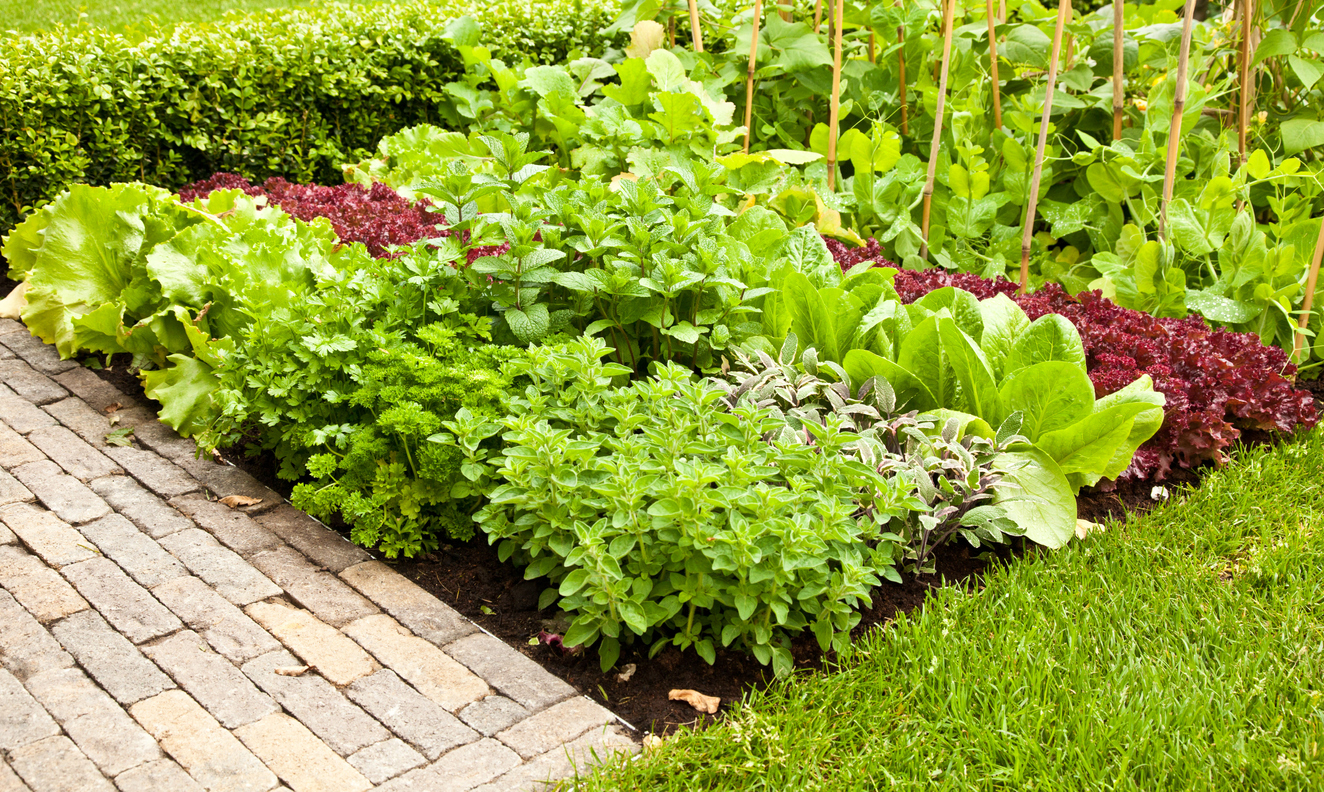I’m going to say right up front that when I first came across the concept of no-dig gardening, I had visions of skipping through the meadow sprinkling seeds like fairy dust, while magic pixies followed behind with perfect drops of water for each seed. By the time imaginary me had reached the end of the field, flowers, vegetables, fruits, and herbs were all in full bloom behind me.
Or there was the other vision where I placed all my favorite seeds carefully on top of the soil only to have a flock of birds come behind me and eat them.
It turns out that neither of these is true. No-dig gardening (also called no-till gardening) focuses on soil health as the means to a fruitful garden. And it really is easy.
Discover 10 top tips for growing, harvesting, and enjoying fruits, vegetables, herbs and more from your home garden—when you access the FREEBIE How to Grow a Vegetable Garden, right now!
How to get going with no-dig-gardening
The basic idea behind no-dig gardening is that every time we disturb the soil, we disrupt the microbiology of that soil. That below-ground ecosystem is teeming with microscopic organisms, earthworms, roots, and moisture. Churning the soil with garden forks and shovels is the equivalent of the proverbial bull in the china shop. It throws everything off, breaks things, is unnecessary, and is generally a bad idea.
What’s appealing, however, is that you can seriously reduce the amount of work you need to do in the garden. Once you get your no-dig-gardening system up and running, you get fewer weeds, richer soil, and you don’t need to fertilize as much, if at all. Here’s how it works in five simple steps. (Several of which require you to do nothing!)
1. Don’t worry about your soil. Not much, anyway. If this is a new garden, you may need to test it for toxic elements in the soil, but otherwise, we’re working on building up a healthy environment. You don’t need to turn the ground or work anything into it.
2. Leave the weeds alone. Seriously. I know. This is the best gardening news ever, right? You’ll take care of the weeds in another step. For now? Pay them no mind.
3. Compost, compost, compost. This is the key to no-dig gardening. Layering on four to six inches of good compost is ideal. That’s enough to block the weeds from getting light, which will kill almost all of them. This compost also feeds the soil, helping to create a permanent healthy soil system.
4. Grab some cardboard. Okay, most weeds you can ignore. But in situations where you only have enough compost for a thin layer, you may need some additional help depriving those weeds of light. No problem! Grab some cardboard to put down as a mulch layer, then cover that with the compost. The process will take a little longer than no-dig gardening with only compost, but it works every bit as well. For any especially stubborn weeds, go ahead and pull them.
5. Plant your seeds and seedlings. But first! Put the spade down. Just poke your finger through enough of the compost layer to give your seeds the depth they need. Water and harvest as normal.
Because you’re working to build up a healthy soil system, your garden should be easier to work with and more productive each year.
That’s enough to get you started, I think. You can learn more about the system here. And if you’re interested, you can get in-depth with the science and technique, but one step at a time!
It’s worth mentioning, too, that this no-dig gardening has a long history. Charles Dowding is probably the most well-known current proponent of the system. Prior to that, American gardener Ruth Stout practiced and wrote about no-till gardening in the 1950s.
Have you tried no-dig gardening? What kind of results did you get?
Discover 10 top tips for growing, harvesting, and enjoying fruits, vegetables, herbs and more from your home garden—when you access the FREEBIE How to Grow a Vegetable Garden, right now!
